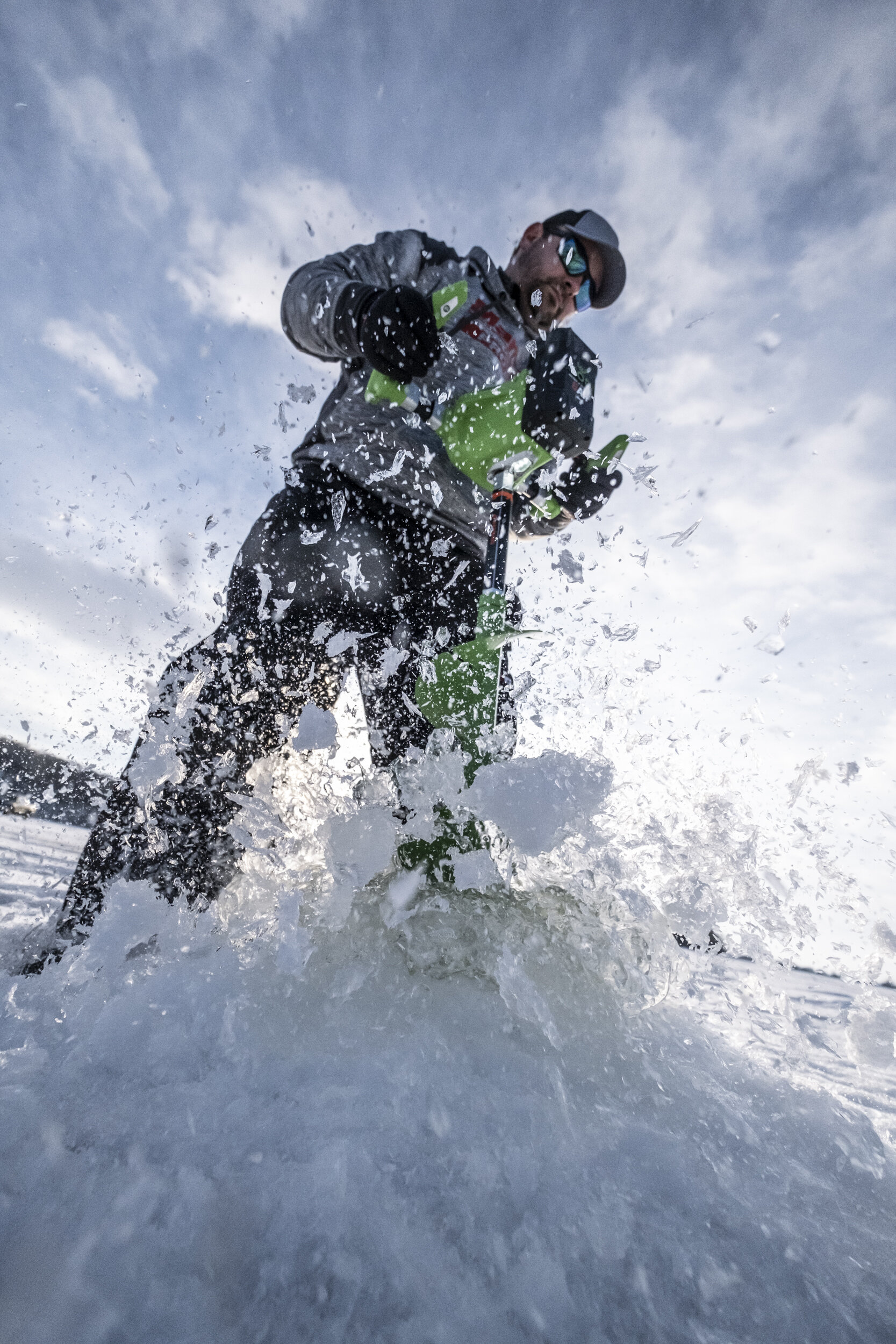Ice augers these days are undergoing a modern revolution of sorts, with all kinds of “firsts” and “never-before’s.” Many manufacturers are moving away from gas, favoring lighter and more reliable electric models. I think that shows confidence in the technology, along with consumer adoption in electric models over previous years. We’re also seeing a big push for lighter auger flighting materials, namely synthetic resins that shave plenty of pounds from the overall unit, especially when paired with cordless drill drivers. Had you told me me years ago that people would be using a cordless electric drill to power a plastic flighting for all of their ice holes, and I wouldn’t have believed you.
All of which makes for some great opportunities that ice anglers will undoubtedly benefit from…eventually. For this season however, folks looking to take part in that revolution have a lot of choices to consider, perhaps too many if you haven’t been following the recent developments. In that light, while I think there’s a time and a place for many of the designs on the market, if I was forced to choose an ultimate combo, here’s what I’d come up with.
Dedicated Electric Powerhead and 8” or 10” Flighting
You didn’t expect one auger to do every task did you? For predator-anglers and wheelhouse junkies, a 10” hole offers a few luxuries. Slower freeze-up is one of them, but so is turning big fish to the top of the ice. Of course, a 10” hole swallows up boots…and rods….and really just about anything. It’s not as effective for roaming the open ice, unless predators are your only game. In which case, the trade-off is worth it. For late winter, an extra battery offers peace of mind, and really negates the gas-auger argument for all but the most ardent of hole-poppers.
Speed is a consideration for open-ice hole-popping, but total ease of use may be more important to many anglers, especially those in a wheelhouse. For that reason, the standard-style blade options (not the curved shaver blades) will perform better at break-through and provide a more comfortable experience. No binding at the bottom, no hard-jarring as the blades catch at the bottom of the hole. Also, standard-style flat blades can re-drill old holes with ease, making them the best choice for those who drill in permanent houses.
An 8” option is best for most anglers that roam the open ice and fish small predators to walleyes. It’s the ultimate in versatility, and sales numbers prove that fact. Should you ever need replacement blades, it’s far easier to find 8”ers than anything else out there, and that one is based on hard-earned experience scouring baitshops throughout the hinterlands at times. If you fish in portables, or ice troll the frozen expanses, your 80% auger will be a dedicated electric auger powerhead and 8” flighting.
Why a dedicated powerhead? In my experience, cordless drill drivers are a great option, but not necessarily for larger bits. Depending on the drill and flighting combination, I simply find it more comfortable to drill with a larger handled apparatus, and am just fine with 20lbs or so for big lakes, thicker ice, and better fish. Maybe I’ll change my tune in time, but for now, I’m happy with the cutting experience of a dedicated electric powerhead on these larger bits.
Lightweight Synthetic 6” Flighting
Once we start talking panfish, my opinions change dramatically towards the electric hand-drill units. Pair up an 18V construction grade cordless to the new synthetic resin flighting systems out there now, and you’ve got an unbeatable lightweight combo that simply shreds ice. You’ll be easier on your drill unit using a 6” flighting, and for panfish, you really don’t need anything bigger. I’ve seen a 15” crappie come up a 5” hole; mind you, it reminded me of a cork coming off a bottle of champagne, but a 6” hole in the ice fits just about anything. That includes most walleyes and certainly all panfish you’re likely to catch in the Midwest.
The beauty of this system is that you can pair the smaller 6” bit to your dedicated powerhead, or run it with a hand drill, whichever you prefer. Interchange them at will, and you’ve got the best of both worlds for nearly any species you’re likely to encounter. Fish light when you can, such that you’re not stuck trying to hole hop backwaters panfish with your 10” house auger, and use the larger option when tackling bigger species.
Why not one auger to rule them all? For me it’s about using the right tool for the job. Sure, I can pound roofing nails with a sledgehammer, but it’ll take me more time and effort. So often, it’s the panfish species that require extra hole drilling sessions to really pinpoint anyway. That’s when a flyweight 6” synthetic bit can make it so much easier, and you, much more likely, to get out there and find more fish. Certainly, if you’re a perch and big water walleye angler roaming for nomadic schools up and down the break, you may opt for an 8” synthetic bit for the same reason. In that instance, you may want a dedicated electric 10” with an 8” synthetic.
To each their own. That said, if you’re chasing multiple species in a variety of waters, using these ultimate configuration guidelines to have a larger dedicated electric auger and flighting combination, with a synthetic version only slightly smaller, will get you punching more holes in more ice. For me, that’s always meant more success, and in this instance, more comfort and convenience to go along with it.
